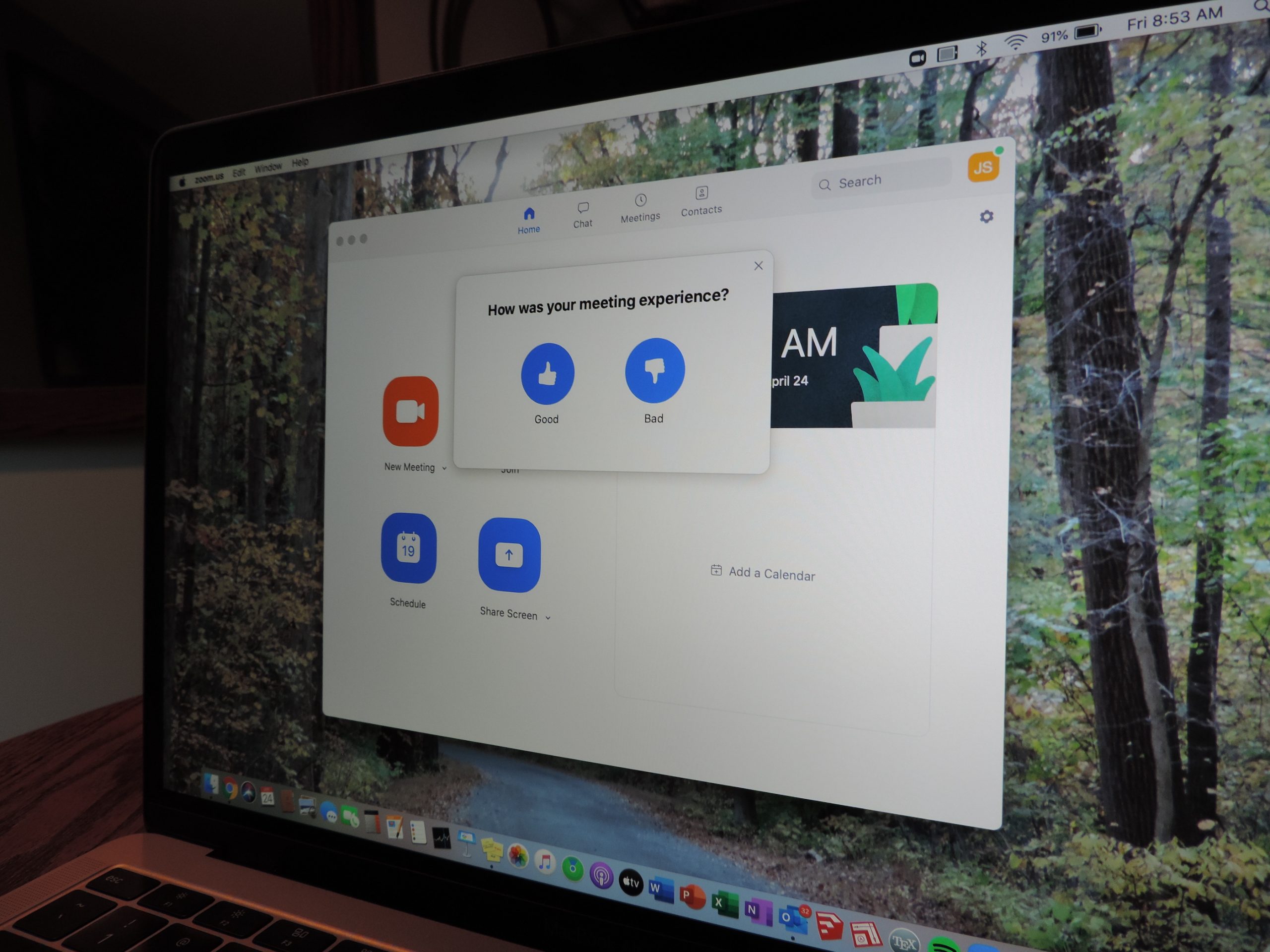
The transition to online learning for Drexel’s spring quarter was a fast decision. Students are trying to make the most of this unprecedented digital learning experience – and instructors are, too.
Hands-on courses, like dance in the Westphal College of Media Arts and Design, chemistry in the College of Arts and Sciences and computer science in the College of Computing and Informatics, are all particularly challenging to transition to an online format.
“The transition [to online learning] was somewhere in between [smooth and abrupt],” Dr. Craig McClure, who currently teaches Chemistry II and Health Chemistry I, said in an email statement. “It was a steep learning curve to figure out how to restructure courses … and figure out [alternative] modes for instruction for the spring quarter.”
McClure explained that it was near impossible for all instructors to be fully prepared for online teaching in the short time frame. Although preparation began full-time during finals week of winter term and continued through the beginning of spring term, he said that professors would have needed at least two months to adequately prepare.
The University provided detailed online teaching seminars, and discussions with colleagues to compare ideas were particularly helpful during the transition, McClure said. Some instructors are using their own previous experience to aid others in teaching online.
Dance program director Sandra Parks currently teaches the practice-based courses Ballet II, Dance Practicum and Senior Project in the Westphal College. Parks is using her online teaching experience to make her classes engaging, inspiring and innovative.
“Before I came to Drexel, I had developed and taught multiple online classes for three universities,” Parks said in an email statement. “When I learned about the transition [to] remote learning for Drexel, I was confident [in developing] my courses, as well as supporting all dance faculty on how to structure their courses.”
Dr. Matthew Burlick currently teaches Introduction to Programming II and Deep Learning courses in the College of Computing and Informatics. Burlick said his lab-based classes are difficult to adapt digitally, but over eight years of experience teaching online has him feeling prepared.
Graduate-level computer science courses at the last university Burlick worked at were taught entirely online, he said in an email statement. At Drexel, they are normally “hybrid” classes, with both face-to-face meetings and an online component.
Burlick is confident in his preparation for online instruction. His biggest concern is whether or not students are prepared for an entire term of it.
“Obviously, [online learning] is a different experience, although that’s not to say that it is necessarily better or worse,” Burlick said. “I think online courses do require an additional element of discipline on [the part] of the students. It is nice to be able to watch lectures asynchronously, in case you missed something.”
McClure said that it is very difficult to replicate the traditional in-person experience, but he is hopeful that the synchronous learning activities for his chemistry classes have been a close second.
Parks is of the same opinion and says it is difficult to replace the simultaneous effort typically achieved in her in-person dance courses.
“It is important for dance students to work in a space that is safe for them, be able to practice locomotor movements and collaborate with each other simultaneously,” Parks said. “The in-person experience will never be replaced by remote learning for many dance classes [that] need the facility that the University can provide … and the collaboration.”
Parks says the goals of her practice-based classes are to safely develop dance skills while critically reflecting and exploring innovative ways to move and create. Her strategy during remote learning has been to focus on the learning objectives and find ways that her students can accomplish them from home.
Parks utilizes digital face-to-face meetings with students regularly, has students record themselves, provides individual feedback and assigns small creative projects and reflective journals. For Parks, some of these strategies are new, some are classics.
Other hands-on activities, like chemistry and computer science labs, have been among the hardest to replicate digitally. Fortunately, instructors are finding creative solutions.
“Most of the [chemistry] labs have been replaced by ‘first-person experimenter’ activities,” McClure said. “Students direct an experimenter in a lab to complete the lab activity.”
“Labs are definitely difficult,” Burlick said about his computer science classes. “Historically, we had students work in pairs. Now, we’re letting them work together without any real constraints. These are almost collaborative weekly assignments.”
Communication and collaboration have been the biggest challenges, McClure said. Through the changes in grading breakdowns, activities and structure for his classes, he is hopeful that communication has remained sufficient enough that his students understand the expectations and will ultimately succeed.
Burlick said he utilizes Slack (a popular communication platform) for discussions, Blackboard Collaborate for lectures and Zoom for digital office hours. He said office hours have been extremely helpful and serve as a great line of communication for the students who have taken advantage of them.
He also noted that, during synchronous digital lectures, students have used the messaging feature to ask questions. Burlick believes students feel more comfortable asking questions in a digital setting than they might in a traditional face-to-face lecture.
The entire University community is working to make the most of remote learning. Taking their varying levels of previous experience and preparation, instructors are finding ways to maximize learning, with the success of students as their biggest focus.
“It is important to look at remote learning as a separate entity instead of comparing it to in-person learning,” Parks said. “These are different experiences. It is too early to assess the effectiveness [of remote learning], but I am looking forward to receiving feedback from students at the end of the term. [For now], I am checking in with students to discuss any particular challenges, and [they] have been extremely open and creative [in working] with me to find solutions.”

